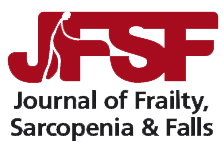Original Article JFSF, Vol 7, No 1, March 2022, p.1-12
Evaluation of strategies to recruit and retain older people with dementia and their informal carers into a Tai Chi Trial to improve balance and prevent falls
Michelle Heward, Layla Johnson, Samuel R. Nyman
Keywords: Dementia, Exercise, Falls, Recruitment and retention, Trial
Abstract
Evaluation of strategies to recruit and retain older people with dementia and their informal carers into a Tai Chi Trial to improve balance and prevent falls
Michelle Heward, Layla Johnson, Samuel R. Nyman
Keywords: Dementia, Exercise, Falls, Recruitment and retention, Trial
Abstract
Objectives: Randomised control trials (trials) involving people with dementia lack detailed analysis of recruitment and retention strategies. To address this, we examined the effectiveness of strategies in “The TACIT Trial: TAi ChI for people with demenTia”. Methods: We recruited dyads (people with dementia and carers) from 3 South of England sites utilising different strategies. Recruitment strategy effectiveness was measured by percent yield (number randomised of total referrals) and cost per randomised participant. Our retention strategy (maintaining contact with participants during weekly telephone calls) was measured by percent yield (number retained by six-month follow-up). Results: Of 359 dyads, 24% were randomised into the study (n=85). The most resource-intensive strategy (research nurses spending 30 minutes explaining the study) had the highest referral to randomisation rate. An incremental cost-effectiveness ratio suggested an alternative approach (nurses and doctors spending 5 minutes explaining the study) was most cost-effective. Retention rates were 86% (n=36/42; intervention group) and 81% (35/43 control group); main reasons for attrition were worsening health and lack of study interest. Conclusions: The results demonstrate person-centred strategies enabling staff to spend time with participants were effective in supporting recruitment and retention. Those designing future trials must consider such strategies and the associated costs.
PDF 